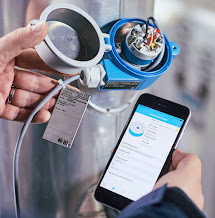Harpak-ULMA announced that the company is extending its platform capabilities to support Augmented Reality on its Rockwell Automation-enabled packaging solutions. The company has entered Beta-phase testing and is targeting commercial availability for its Augmented Reality (AR) option next year. AR represents a leap forward for staff knowledge transfer — employing digital visual overlays through a combination of both handheld and hands-free devices. It supersedes traditional approaches to operator training and maintenance of industrial assets.

AR presents a powerful solution for producers seeking to alleviate the well-known upskilling issues associated with high labor turnover, productivity, and error proofing. According to a study by the Manufacturing Institute and Deloitte, by 2025, almost 3.5 million manufacturing jobs will become available, of which 2 million will remain unfilled. AR can help producers bridge the skills gap at the root of this major disconnect. By 2025, three out of every four workers will be millennials who will be driving new workplace expectations. The Journal of Organizational Learning and Leadership reveals that millennials’ innovation and exploration traits are best enhanced through active learning (pdf).
While AR has not yet been widely employed in packaging markets, other industrial experiences indicate that real-time “active-learning” dramatically accelerates front-line staff learning curves and reduces error. For example, Boeing workers completed intricate wire harnesses assemblies using AR-based work instructions, cutting assembly time by 25%, and reducing error rates to nearly zero. Staff with little or no formal training can be rapidly up-skilled to perform nonrepetitive complex activities — the kind of work inherent in many unfilled manufacturing positions today. When a machine malfunctions or a tool change is required, AR guides the operator or maintenance worker visually step by step through task execution.
In 2018, Harpak-ULMA launched its strategy to produce smart, connected platforms that deliver packaging as an integral part of the manufacturing digital thread. These platforms enable emerging Internet of Things (IoT) software applications (such as AR) that leverage production data to digitally transform traditional plant asset maintenance and operational processes. However, simply enabling the utilization of such applications is insufficient to help producers realize value. The combination of skill sets required to develop AR content is not only atypical of producer staffing models – they’re in short supply altogether.
Harpak-ULMA’s Innovation Engineer, Alexander Ouellet, leads the company’s AR development effort. He explains, “AR requires new roles such as UX or UI designers, graphic designers to create assets, and 3D modelers who understand how to turn an engineering data set into production-ready, user-facing graphics. You also need IoT software architects to define AR experience data flows to ensure experience scalability. We quickly understood that it wasn’t enough to simply enable AR on our platforms – our customers want more than a toolkit. That’s why we are building out fully contextualized, solution-specific AR content. When our customers opt for AR as part of their purchase, we intend to provide a library of experiences for tool changes, maintenance, expert capture of training processes, and related device recommendations. We do the heavy lifting so customers can deploy a complete AR experience along with asset commissioning. We also anticipate that customers may request custom AR content, which will be accommodated as well.”
Ouellet noted he will present the opportunities and challenges associated with deploying AR solutions as part of the upcoming PackExpo Innovation stage on November 9th at 2 pm Central Standard Time (CST).
Harpak-ULMA utilizes applications such as FactoryTalk Innovation Suite, powered by PTC and PTC’s popular ThingWorx IoT solution platform and Vuforia AR platform. All leverage a Rockwell Automation controls platform to optimize IoT data availability and scalability. Vuforia enables the rich, contextual digital overlay users demand for a true AR experience. Kevin Roach, CEO of Harpak-ULMA, notes that “While we believe our vision and role is critical to accelerating digital transformation of producer packaging processes, ‘it takes a village’ to bring these disruptive technologies to market today. Rockwell Automation and PTC are both major, well-known vendors in our markets. Together we will continue to build out compelling value that’s easy for our customers to implement and use.”
Jim Heppelmann, PTC’s president and CEO, offered additional insight, “Succeeding in our new normal demands that we bring digital to the 75% of workers – 2.7 billion globally – who are part of the front-line workforce. Knowledge workers have tools like Microsoft Office, Zoom, and others that work great on a computer screen – but not on the plant floor. Front-line workers need a way to collaborate, publish, and share ‘how-to’ digital data and content mapped onto the real world rather than a computer screen – and that’s the very definition of augmented reality. AR is essentially the front-line equivalent of those tools on which knowledge workers rely so heavily.”
Blake Moret, Chairman and CEO of Rockwell Automation, also commented, “Manufacturers around the world are seeking integrated approaches to digital connectivity and automation controls to unlock unprecedented operational productivity, bring their products to market faster, and increase asset utilization while lowering risk. Our connected enterprise vision embraces practical approaches that make these concepts real. Including working collaboratively, as we have in this case with Harpak-ULMA and PTC, helps more producers leverage innovative technologies to deliver tangible improvements in production operations. Together, we’re combining our strengths to bring a more connected enterprise to life.”
@HarpakULMA @ROKAutomation #Packaging #PAuto #AR
















































